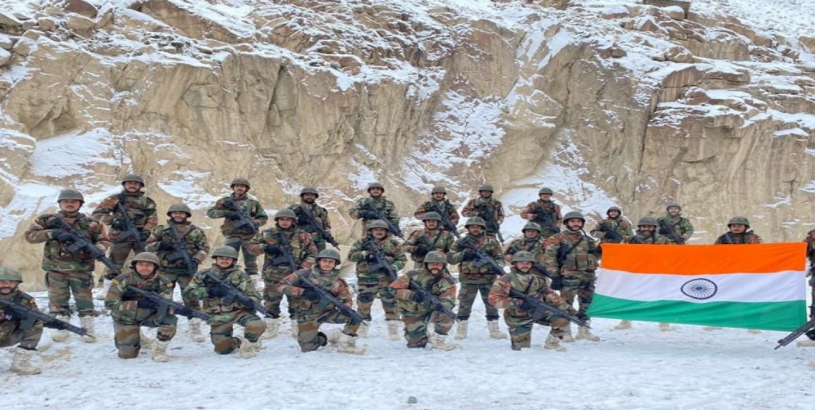To match Chinese border defences, Indian Army embraces rapid construction technology
- The implementation of this project in Eastern Ladakh and other sectors along the LAC is going to predictably rile the Chinese.
By Col Anil Bhat (Retd)
January 2. The Indian Army inaugurated its first 3-D Printed House Dwelling Unit (with ground plus one configuration) for soldiers at Ahmedabad Cantonment on December 28, 2022. The dwelling unit has been constructed by the Military Engineering Services (MES) in collaboration with MiCoB Pvt Ltd, incorporating the latest 3D Rapid Construction Technology.

Construction work of the dwelling unit measuring 71 sqm with garage space was completed in just 12 weeks by utilising the 3D printed foundation, walls and slabs. The disaster-resilient structures comply with Zone-3 earthquake specifications and green building norms. The 3-D printed houses are symbolic of the modern-day rapid construction efforts to cater for growing accommodation requirements of the armed forces personnel. These structures also fulfil the commitment of the Indian Army in fostering the ‘Atmanirbhar Bharat Abhiyan’, Prime Minister Narendra Modi’s signal self-reliance mission for the defence forces.
The technique utilises a concrete 3D printer that accepts a computerised three-dimensional design and fabricates a 3-D structure in layer by layer by extruding a specialised type of concrete specifically designed for the purpose.
An infantry division of the Indian Army, headquartered at Ahmedabad, has been instrumental in pursuing the project with manifold applications. Indian Army units have already dovetailed 3D printing technology in construction of precast permanent defences and overhead protection meant for operations. These structures are being validated over a period of one year and are being incorporated in all terrains, the most recent being in the Ladakh, which shares the Line of Actual Control (LAC) with China, or to be specific China-occupied Tibet.
Next-gen bunkers
The Indian Army will not only also construct modular, 3D-printed next-generation battlefield bunkers to provide better protection to frontline soldiers guarding the LAC in the Ladakh sector, but also create underground facilities for the storage of ammunition at forward locations along the LAC and build many new roads, bridges and tunnels as part of a delayed but overall effort to strengthen its capabilities at a time of a continuous border standoff with Chinese People’s Liberation Army (PLA). These modern bunkers are being made using 3D printers made from a proprietary form of quick drying concrete and admixture. The US Army has been reportedly using 3D printers to create bunkers which are very strong and can withstand direct hits by a T-90 tank’s shell. Trials have reportedly already been conducted in Rajasthan’s desert sector and eastern Ladakh.
Construction of permanent defences along LAC are expected to begin in 2023. The project of constructing 3D permanent defences is being implemented by the Corps of Engineers. These defences can be easily moved by two soldiers as the heaviest component in the structure weighs only 40 kg.
The implementation of this project in Eastern Ladakh and other sectors along the LAC is going to predictably rile the Chinese. As it is they have been very peeved with all the strategic infrastructure developments, albeit delayed, along the Indian side of the LAC, which include prefabricated structures for troops in many areas, though these do not match the more superior ones that PLA has had.
(The writer, a former Indian Army veteran and author of China Bloodies Bulletless Borders, can be contacted at wordsword02@gmail.com)
– By arrangement with SOUTH ASIA MONITOR





